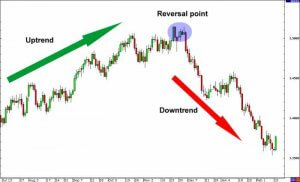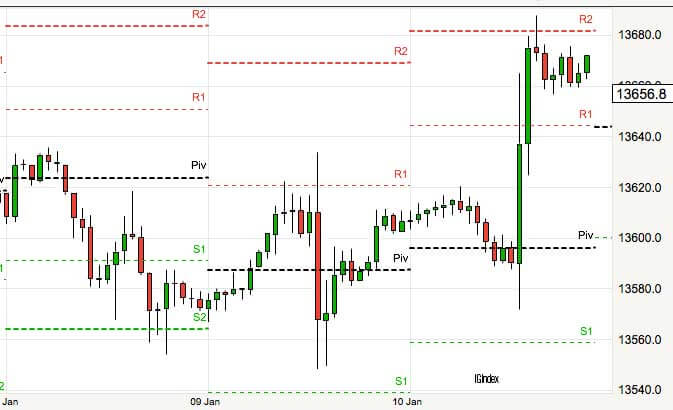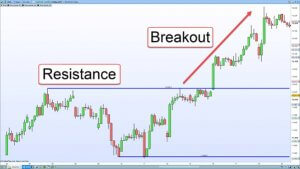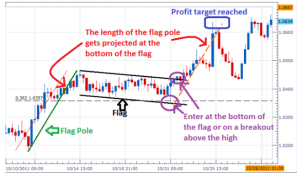
Introduction
Intraday trading, also known as day trading, is a popular trading style where traders execute trades within the same trading day, aiming to profit from short-term price movements. In this comprehensive guide, we will explore the basics, tools, strategies, risk management, and essential tips for successful intraday trading. By understanding and implementing effective intraday trading strategies, you can increase your chances of success in the fast-paced world of day trading.
Basics of Intraday Trading
Intraday trading operates within a specific timeframe, typically within the regular trading hours of the market. It differs from positional trading, which involves holding trades overnight or for a more extended period. Intraday traders capitalize on short-term price fluctuations to generate profits. Understanding the key principles of intraday trading, such as time-sensitive decision-making and quick trade execution, is essential for mastering this trading style.
Essential Tools for Intraday Trading
To succeed in intraday trading, you need the right tools at your disposal. A reliable trading platform with advanced features, real-time market data, and interactive charts is crucial. These tools help you monitor price movements, identify trade setups, and execute trades efficiently. Additionally, technical indicators specifically designed for intraday analysis, such as moving averages and volume indicators, can provide valuable insights into market trends and potential trade opportunities.
Popular Intraday Trading Strategies
There are several popular intraday trading strategies used by traders to navigate the dynamic market environment:
- The Breakout Trading Strategy involves entering a trade when the price breaks above a significant resistance level or below a support level. Traders aim to profit from the subsequent price momentum in the breakout direction.
- The Pullback Trading Strategy focuses on entering a trade during a temporary price retracement within an established trend. Traders look for areas of support or resistance where the price might reverse and continue its original trend.
- The Range Trading Strategy involves identifying well-defined price ranges where the price oscillates between support and resistance levels. Traders aim to buy near support and sell near resistance, capitalizing on the range-bound price movements.
- The Scalping Strategy aims to profit from small price fluctuations. Scalpers execute numerous trades within a short time frame, relying on quick trade entries and exits to accumulate small gains that can add up over time.
- The Momentum Trading Strategy involves identifying stocks or other financial instruments that exhibit strong upward or downward momentum. Traders join the trend, looking to capture substantial price moves in a short period.
Technical Analysis for Intraday Trading
Technical analysis plays a vital role in developing effective intraday trading strategies. By examining historical price and volume data, traders can identify patterns, trends, and potential trading opportunities. In this section, we will delve deeper into the various aspects of technical analysis for intraday trading and explore how it enhances decision-making and trade execution.
The Importance of Technical Analysis in Intraday Trading
Technical analysis is essential in formulating successful intraday trading strategies. By utilizing technical tools and indicators, traders can make informed decisions based on price patterns, chart formations, and trend analysis. These insights aid in forecasting future price movements, allowing traders to capitalize on short-term trends and maximize profit potential.
Key Elements of Technical Analysis for Intraday Trading
- Candlestick Patterns: Candlestick patterns are a crucial component of intraday trading strategies. Traders analyze these patterns, such as doji, hammer, and engulfing patterns, to identify potential trend reversals or continuations. Recognizing these patterns provides valuable entry and exit signals, enabling traders to optimize their intraday trading positions.
- Support and Resistance Levels: Support and resistance levels serve as essential reference points for intraday traders. These levels are identified through technical analysis and indicate areas where the price tends to stall or reverse. Intraday traders closely monitor these levels to determine optimal entry and exit points for their trades, increasing the effectiveness of their intraday trading strategies.
- Moving Averages: Moving averages (MAs) are widely used in technical analysis for intraday trading. By smoothing out price data, moving averages provide traders with a clearer view of the underlying trend. Intraday traders often employ shorter-term moving averages, such as the 9-period or 20-period moving averages, to identify intraday trends and validate potential trade setups.
- Indicators: Technical indicators are valuable tools in intraday trading strategies. Popular indicators, including the Relative Strength Index (RSI), Moving Average Convergence Divergence (MACD), and Stochastic Oscillator, offer insights into overbought or oversold conditions, trend strength, and potential reversals. Integrating these indicators into intraday analysis helps traders confirm trade setups and make well-informed decisions.
Applying Technical Analysis in Intraday Trading Strategies
- Trend Identification: Technical analysis enables intraday traders to identify and capitalize on trends. By analyzing moving averages, trendlines, and price channels, traders can determine the direction and strength of the trend. Aligning trades with the prevailing trend enhances the effectiveness of intraday trading strategies and increases the probability of successful trades.
- Entry and Exit Signals: Technical analysis provides valuable entry and exit signals for intraday trades. Traders look for specific candlestick patterns, breakouts, or bounces off support and resistance levels to identify optimal entry points. Additionally, technical indicators generate signals when a trend is reversing or gaining momentum, indicating potential exit points for profitable trades.
- Risk Management: Technical analysis plays a crucial role in risk management for intraday traders. By identifying support levels, traders can set appropriate stop-loss orders to limit potential losses. Furthermore, technical analysis aids in establishing favorable risk-reward ratios, allowing traders to set profit targets that exceed the potential risk of the trade.
- Timeframe Selection: Intraday traders can customize their technical analysis based on their preferred timeframe. Shorter timeframes, such as 5-minute or 15-minute charts, provide more granular data for precise entry and exit points. By employing intraday-specific indicators like the Average True Range (ATR) or intraday pivots, traders can fine-tune their analysis to suit their chosen timeframe, optimizing their intraday trading strategies.
Combining Technical Analysis with Other Factors
While technical analysis forms the foundation of intraday trading strategies, it is crucial to consider other factors such as market news, economic events, and sector-specific developments. Combining technical analysis with fundamental analysis enhances the overall understanding of the market, allowing traders to make well-informed trading decisions based on a comprehensive range of information.
Risk Management in Intraday Trading
Risk management is a critical component of successful intraday trading. It involves implementing strategies and techniques to protect your capital, minimize potential losses, and ensure long-term profitability. Effective risk management allows traders to navigate the volatile nature of intraday trading with a disciplined and systematic approach. Let’s explore some key aspects of risk management in the context of intraday trading, including the importance of risk management in intraday trading strategies.
Position Sizing and Risk-Reward Ratio
Position sizing is a vital aspect of intraday trading strategies and risk management. It refers to determining the appropriate amount of capital to allocate to each trade based on your risk tolerance and available funds. By carefully assessing the potential risk and reward of a trade before entering, you can ensure that your intraday trading strategies have favorable risk-to-reward profiles. Implementing proper position sizing techniques is crucial for managing risk and optimizing profitability in intraday trading strategies.
When applying risk management principles in intraday trading, it is common to risk a small percentage of your trading capital on each trade, such as 1% or 2%. This approach limits the potential impact of individual losing trades on your overall capital and helps you avoid significant drawdowns. Properly determining position sizes based on risk-reward ratios is an integral part of successful intraday trading strategies.
Setting Stop-Loss Orders
One of the most crucial risk management tools in intraday trading strategies is the use of stop-loss orders. Stop-loss orders serve as protective measures by automatically closing a trade if the price reaches a predetermined level. They help limit potential losses and protect your capital in case the trade goes against your expectations.
When setting a stop-loss order, it is essential to determine an appropriate level that considers the specific dynamics of the trade and the risk tolerance defined in your intraday trading strategies. Setting the stop-loss level too close to the entry point may result in premature exits, while placing it too far away may expose you to excessive losses. Incorporating well-placed stop-loss orders is crucial for managing risk effectively in intraday trading strategies.
Managing Emotions and Psychological Discipline
Intraday trading strategies require managing emotions and maintaining psychological discipline to make rational and objective decisions. Emotions, such as fear and greed, can cloud judgment and lead to impulsive and irrational trading choices. Implementing risk management techniques involves adhering to predetermined rules and strategies even when emotions run high.
Establishing a comprehensive intraday trading plan that includes specific entry and exit criteria, risk management guidelines, and trade management rules is vital for maintaining emotional control. By following your plan consistently, you can avoid making impulsive decisions based on momentary market fluctuations. Psychological discipline plays a significant role in managing risk and executing intraday trading strategies effectively.
Diversification and Trade Selection
Diversification is an important risk management technique in intraday trading strategies. It involves spreading your capital across multiple trades and different financial instruments to reduce the concentration of risk. Diversifying your trades can help protect your capital from the impact of individual trade outcomes or adverse market conditions.
When selecting trades, it is crucial to consider correlation among instruments as part of your risk management and intraday trading strategies. Avoiding highly correlated trades helps reduce the risk of multiple positions moving in the same direction and magnifying losses during unfavorable market conditions. Assessing the overall portfolio risk and maintaining a balanced trade selection contribute to a well-diversified intraday trading strategy and effective risk management.
Continual Monitoring and Adaptation
Effective risk management in intraday trading strategies requires continuous monitoring of trades and adapting to evolving market conditions. Regularly reviewing the performance of your trades, adjusting stop-loss levels as prices change, and fine-tuning your strategies based on market dynamics contribute to effective risk management.
Adjusting risk parameters to match current market conditions is crucial. Volatile market periods may require wider stop-loss levels, while low-volatility periods may warrant tighter risk control. Staying attuned to market dynamics, monitoring trades diligently, and adjusting risk management techniques accordingly are essential elements of successful intraday trading strategies.
Developing a Personalized Intraday Trading Plan
One of the crucial steps to becoming a successful intraday trader is developing a personalized trading plan. A trading plan serves as a roadmap that outlines your goals, intraday trading strategies, risk tolerance, and overall approach to intraday trading. By creating a well-defined plan, you can approach the market with clarity, discipline, and confidence. Let’s explore the key components of a personalized intraday trading plan:
1. Define Your Trading Goals: Start by setting clear and realistic goals for your intraday trading. Do you aim to achieve consistent daily profits using effective intraday trading strategies, or are you targeting specific monthly or annual returns? Clearly defining your goals helps you stay focused and evaluate your progress over time.
2. Identify Your Risk Tolerance: Assessing your risk tolerance is essential in determining the appropriate risk management strategies for your intraday trades. Consider factors such as your financial situation, time commitment, and emotional resilience. Determine how much capital you are willing to risk on each trade and establish your maximum risk tolerance.
3. Select Suitable Intraday Trading Strategies: With the vast array of intraday trading strategies available, it’s crucial to select a few that align with your trading goals and risk tolerance. Consider the market conditions, your preferred trading style, and your level of experience. Assess the pros and cons of different strategies such as breakout trading, pullback trading, range trading, scalping, and momentum trading. Experiment with various strategies in a demo account to determine which ones work best for you.
4. Determine Your Trading Timeframe: Intraday trading involves executing trades within a single trading day, but you can further define your trading timeframe. Decide whether you prefer shorter timeframes, such as one-minute or five-minute charts, or longer timeframes, such as 15-minute or 60-minute charts. Your choice of timeframe will influence the frequency of your trades and the level of detail in your analysis.
5. Establish Entry and Exit Criteria: Clearly define the criteria that will guide your trade entries and exits using effective intraday trading strategies. This includes identifying key technical indicators, chart patterns, or price levels that signal potential trade opportunities. For example, you may decide to enter a trade when the price breaks above a resistance level with increasing volume. Similarly, determine your exit criteria, whether it’s a target price, a trailing stop, or a specific technical indicator signal.
6. Develop a Money Management Strategy: Money management is a critical aspect of intraday trading. Decide on the percentage of your trading capital you will risk on each trade, known as position sizing, using proven intraday trading strategies. Additionally, determine your risk-reward ratio for each trade. This ratio indicates the potential profit compared to the amount you are willing to risk. A favorable risk-reward ratio helps ensure that your winning trades compensate for your losing trades.
7. Establish Trading Rules and Parameters: Set specific rules and parameters for your intraday trades using effective intraday trading strategies. Define the maximum number of trades you will take in a day, the maximum loss you are willing to tolerate in a single trading session, and the maximum drawdown you will allow in your trading account. Establishing these rules helps you maintain discipline, prevent emotional decision-making, and avoid impulsive trades.
8. Backtest and Optimize Your Strategies: Before implementing your intraday trading plan with real money, backtest your strategies using historical market data. Analyze the performance of your strategies over different market conditions and fine-tune them as necessary. This process helps you gain confidence in your intraday trading strategies and identify their strengths and weaknesses.
9. Document and Track Your Trades: Keep a trading journal to document each of your trades, including the entry and exit points, reasons for entering the trade, and any observations or lessons learned. Regularly review your trading journal to identify patterns, evaluate the effectiveness of your intraday trading strategies, and make necessary adjustments for continuous improvement.
Tips for Successful Intraday Trading
Intraday trading can be a rewarding venture if approached with the right strategies and mindset. Here are some essential tips to help you achieve success in your intraday trading journey while incorporating effective intraday trading strategies along the way.
- Develop a Solid Trading Plan: A well-defined trading plan is the foundation of successful intraday trading. It should outline your trading goals, risk tolerance, preferred trading instruments, and specific intraday trading strategies you intend to utilize. Having a plan in place helps you stay focused and disciplined during fast-paced trading sessions.
- Choose the Right Trading Instruments: Selecting the appropriate trading instruments is crucial in intraday trading. Focus on liquid stocks or other financial instruments that offer sufficient volatility and trading volume. This liquidity ensures smooth trade executions and enables you to enter and exit positions without significant price slippage.
- Master a Few Strategies: Rather than attempting to employ multiple strategies simultaneously, it is often more effective to focus on mastering a select few. Become proficient in a handful of proven intraday trading strategies that align with your trading style and market conditions. This allows for better decision-making and enhances the chances of consistent profitability.
- Practice Risk Management: Implementing robust risk management techniques is vital in intraday trading. Set appropriate stop-loss orders for each trade to limit potential losses. Determine the optimal position size based on your risk tolerance and the specific trade setup. Maintaining a favorable risk-reward ratio helps ensure that your winning trades outweigh your losing trades in the long run.
- Monitor Market Volatility: Keep a close eye on market volatility, as it impacts intraday trading opportunities. Higher volatility often leads to greater price fluctuations, presenting more potential for profits. However, be cautious during periods of low volatility, as it can result in limited trading opportunities. Adjust your trading strategies accordingly to adapt to changing market conditions.
- Utilize Technical Analysis: Technical analysis is an essential tool in intraday trading. Incorporate relevant technical indicators, chart patterns, and candlestick formations into your analysis. Identify support and resistance levels, trendlines, and key breakout or breakdown points to make informed trading decisions. Combine multiple technical analysis tools to validate trade setups and enhance accuracy.
- Implement Real-Time Market Monitoring: Stay actively engaged with real-time market data and news updates. Utilize reliable trading platforms that provide live quotes, charts, and news feeds. This enables you to spot emerging trading opportunities promptly and react to market developments swiftly. Keep an eye on major economic releases and corporate events that can significantly impact the markets.
- Maintain Trading Discipline: Emotions can easily cloud judgment and lead to impulsive decision-making. Maintain discipline by strictly adhering to your trading plan and predetermined entry and exit points. Avoid deviating from your strategies based on fear, greed, or external noise. Consistency and discipline are key attributes of successful intraday traders.
- Practice Proper Money Management: Effective money management is crucial for sustainable success in intraday trading. Avoid risking a significant portion of your trading capital on a single trade. Instead, allocate a reasonable percentage of your capital to each trade while ensuring adequate diversification. This helps protect your overall portfolio and limits the impact of individual trade losses.
- Continuous Learning and Adaptation: The markets are ever-evolving, and intraday traders must continuously learn and adapt. Stay updated with industry news, market trends, and advancements in intraday trading strategies. Engage in ongoing education, read trading books, attend webinars, and follow reputable traders to expand your knowledge and refine your skills.
Common Mistakes to Avoid in Intraday Trading
Intraday trading can be highly rewarding, but it also carries its fair share of risks. To maximize your chances of success, it’s crucial to avoid common mistakes that can hinder your profitability and overall trading performance. Let’s delve into some of the most prevalent pitfalls and how to steer clear of them in your intraday trading journey.
1. Neglecting a Well-Defined Trading Strategy
One of the biggest mistakes traders make in intraday trading is approaching the market without a clear and well-defined trading strategy. Without a strategic plan in place, you may find yourself making impulsive decisions based on emotions or short-term market fluctuations. A solid trading strategy should encompass entry and exit rules, risk management parameters, and guidelines for trade selection based on your preferred intraday trading strategies. Regularly evaluate and fine-tune your strategy to adapt to changing market conditions.
2. Overtrading and Chasing Trades
Overtrading is a common pitfall that many intraday traders fall into. It refers to excessive trading, taking on more trades than necessary or beyond your predetermined trading plan. Overtrading often stems from a fear of missing out on potential profit opportunities or a desire to recoup losses quickly. However, this approach can lead to increased transaction costs, diluted focus, and emotional exhaustion. Stick to your trading plan, be selective with your trades, and avoid chasing trades that don’t align with your preferred intraday trading strategies.
3. Failing to Implement Proper Risk Management
Effective risk management is crucial in intraday trading, as it helps protect your capital and maintain a sustainable trading approach. One common mistake is not implementing proper risk management techniques such as setting stop-loss orders. A stop-loss order allows you to define a predetermined price level at which you will exit a trade to limit potential losses. Additionally, determining an appropriate position size based on your risk tolerance and maintaining a favorable risk-reward ratio is essential. Never risk more than you can afford to lose on a single trade, as it can have a detrimental impact on your trading account.
4. Ignoring Market Analysis and Research
Intraday trading requires a solid understanding of market dynamics and the ability to analyze and interpret relevant market information. Neglecting market analysis and research is a common mistake that can hinder your decision-making process. Stay updated with the latest financial news, economic indicators, and company-specific developments that can impact the price movements of the instruments you trade. Utilize technical analysis tools, such as chart patterns, indicators, and intraday trading strategies, to identify potential entry and exit points. Sound analysis and research form the foundation of informed trading decisions.
5. Allowing Emotions to Drive Trading Decisions
Emotional decision-making is another significant mistake that intraday traders should avoid. Fear and greed are powerful emotions that can cloud judgment and lead to irrational trading choices. It’s crucial to remain disciplined, stick to your trading plan, and avoid impulsive decisions based on momentary market fluctuations. Implementing a pre-determined set of rules and following them diligently can help minimize emotional interference in your trading. Emotional control and a rational mindset are key traits of successful intraday traders.
6. Failing to Adapt to Changing Market Conditions
The financial markets are dynamic and constantly evolving. Failing to adapt to changing market conditions is a common mistake that can lead to missed opportunities or entering trades that are no longer viable. Stay vigilant and flexible in your trading approach. Regularly evaluate your trading strategy and make necessary adjustments to align with prevailing market conditions. Be open to new opportunities and be prepared to modify your intraday trading strategies when needed.
Conclusion
Intraday trading offers exciting opportunities for short-term traders to profit from the dynamic movements of financial markets. By understanding the basics, utilizing effective intraday trading strategies, implementing sound risk management techniques, and maintaining discipline, you can increase your chances of success in this fast-paced trading style. Remember, continuous learning, practice, and adaptability are key factors in becoming a successful intraday trader.


